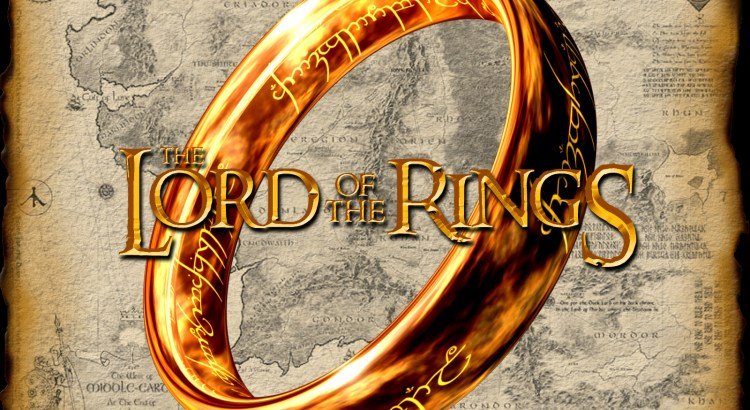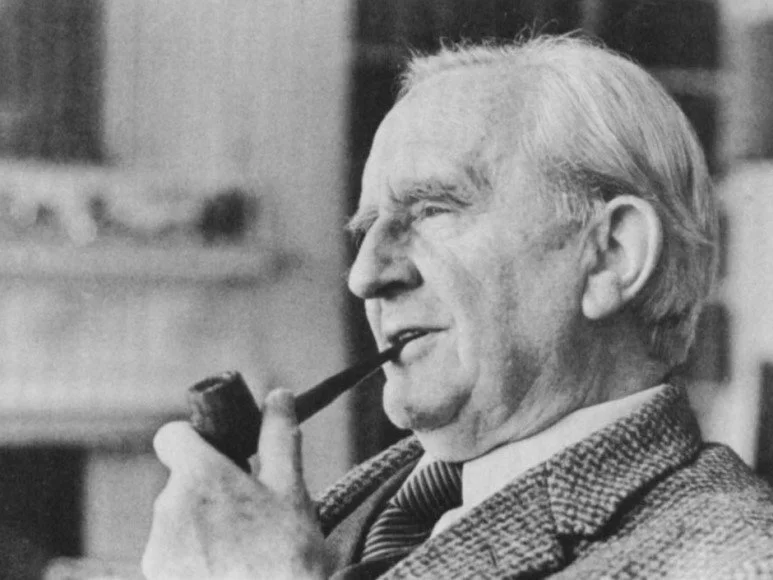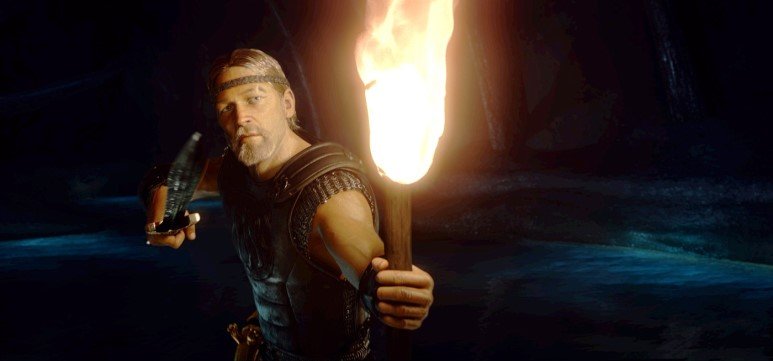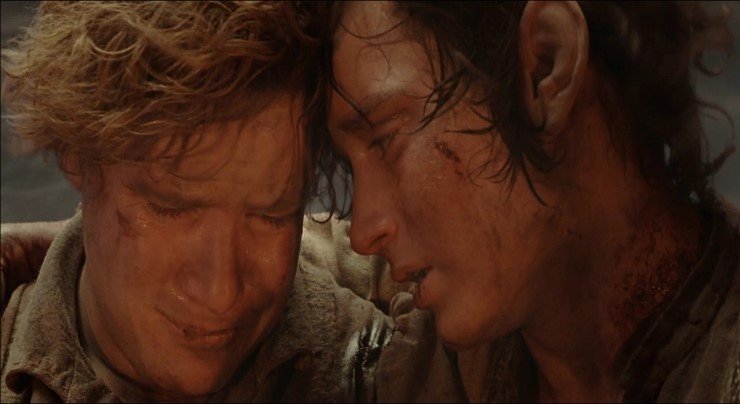The Lord of The Rings - Concerning Hobbits
In 1954, when J.R.R Tolkien published The Lord of The Rings, literary critics in the UK couldn't hide their embarrassment. First, they didn't know how to approach this unprecedented style of literary work. Second, some of them were furious that a professor of Oxford University had written a mere fairy tale about Elves, Trolls, Wizards, and Orcs in the violent times of 1940~50. While a few critics were cheering over LOTR, most of them, along with the newspapers, lashed out against Tolkien. However, what baffled them the most were the reactions LOTR garnered from ordinary readers. LOTR was so thoroughly raved about by the readers that it made The Hobbit's applause seem like a joke. As time passed, LOTR became a legendary worldwide bestseller. The numbers of a survey, which targeted people from various social backgrounds, selected it as the most significant achievement among 20th-century British works of literature. The critics couldn't help admitting the novel's power and influence.
LOTR gave birth to a new genre called 'fantasy literature. It proved that fairytales were not only for children but could be sophisticated literary works aimed at adults. Furthermore, pop culture in the postmodern age highly depends on the fantasy genre. The genre wouldn't have come into existence without LOTR. The status of LOTR these days, almost 70 years after its publication, is still as absolute and enchanting as that of the One Ring in Middle Earth. The impact of The Lord of The Rings trilogy on the film industry was as shocking as that of the book on the history of literature. With its advanced emotion capture and sophisticated computer graphic animation, the film greatly influenced later film productions and received 11 Oscars out of 13 nominations.
Like most great works, as many discourses as a dead whale surrounded by a herd of sharks have chewed on LOTR. Some of the perspectives damage, exaggerate and underestimate the texts of the books. Others spew nonsense, ignoring the epistemes of the time when the saga was published. For various reasons, this paper will use the dominant, universal discourse that Tolkien intended to create with his books as a methodology to analyze LOTR. Moreover, although the movies were a masterpiece, they couldn't revive the profoundness of the original text on the screen. So, this paper will discuss both the books and the movies.
Definitely, what Tolkien intended with LOTR--the foremost discourse--was a restoration of myth. Back in the days when the Normans conquered England, most of the Anglo-Saxon myths were lost to the world. Although the legend of King Arthur remains in England, the mythologists like Tolkien consider it an imported story from France, not native to England. England had no unique myth, and it frustrated Tolkien, who knew how powerful myth was and what they could do to people. Eventually, Tolkien decided to create a unique myth only for England.
Tolkien denied that the One Ring, the heart of the story, was influenced by the Ring of Nibelung, except that both are rings. However, Tolkien also clarified that he borrowed various mythical concepts from different cultures, including Germany. Also, he was a devout Catholic. Thus, it’s not hard to find traces of Christianity and other myths in LOTR.
However, with this ‘finding symbol’ approach, Joseph Pearce only focused on Tolkien’s religious aspects and failed to explore the stream of discourse that pierces through the entire text. What is vital in analyzing the restoration of the myth Tolkien intended is not to reveal which image is affected by which legend. In the end, what matters is the internal consistency of his creation and what it constructs in reality.
Beowulf
Beowulf, the most famous German myth, was regarded as a fairy tale for children until Tolkien gave a new life to it. He insisted that the bizarre fairytale-like story of Beowulf was the lens through which people saw the world in the age when Germanic culture and Christianity merged. Consequently, Tolkien said the fairytale-like tale could be a form of art, unveiling how people at that time perceived the world. This analysis of Beowulf shows Tolkien’s belief: ‘myth holds truth.’ He thought that myth and legend were manifestations of human imagination about what happened in those days. To Him, myth was a virtual world that couldn’t be separated from reality. People in the real world project their perspective, point of view, and social virtues onto a myth, and they get it again to understand phenomena in the real world.
Thus, building a passageway between the virtual and real worlds is essential. Only a firm link can make a reliable interaction between the two worlds. This is why verisimilitude carries great importance. The Lord of The Rings is widely acknowledged for its sophisticated and complicated setup. It would take at least ten pages to explain the details of the narrative structure of LOTR. Tons of histories of each different species, geological features, different calendars, and even elvish. However, it doesn’t usually come into the spotlight that the verisimilitude of LOTR was thoroughly, precisely designed under the belief of Tolkien - Myth holds truth.
The narrative of LOTR is Tolkien’s documentation, not creation. Following the setup, all the stories in LOTR come from the Red Book by Bilbo Baggins, and Tolkien just found the book and translated it into modern English. To make it even more probable, he added the supplement chapter about how he translated the western languages in Middle Earth into English. When he created the languages for the species in Middle Earth, Tolkien also created the linguistic transformational history. Through this virtual linguistic, he locates the present age we live in as an addition to the 4th age of Middle Earth.
“History became legend. Legend became myth.” - Galadriel
The LOTR narrative operates for Tolkien's belief; Myth holds truth. As the story continues, each species finds that the stories passed down from their ancestors as a legend were what really happened a long time ago. In the original book, Faramir gets astounded when he meets Aragorn and sees the sword of Isildur, which he considers the stuff of legend. In the movies, Boromir deals with the legend of Narsil. Besides, the legend of the helms deep that the horn of Helm Hammerhand brings salvation comes true as Gimli blows the horn and Gandalf arrives in time with the cavalry. Both in the books and movies, the entire storyline, centering around the One Ring, was once regarded as a legend, an old bedtime story. (Even Gandalf wasn't sure at first about the rumor of the One Ring) However, in the wake of its reappearance, it becomes the dangerous truth that engulfs all species in Middle Earth.
This is not a unique feature of LOTR. Regardless of their cultural background and timeline, many fantasy literature or folktales also have this narrative structure. The Song of Ice and Fire develops as the legend of Azor Ahai and Night King slowly becomes the truth. Talking animal and Aslan in The Narnia Chronicle, heroes in folktales, and all the ‘ancient’ stuff in the modern RPG genre share the same mechanism that LOTR presented. However, ‘Myth holds Truth’ in LOTR is not only for catharsis as in The Song of Ice and Fire, but is for a revival of a dormant value in myths that people have long forgotten. Consequently, it is not optional to contemplate how this methodology, which has become a cliche in the fantasy genre, produces a prolific discourse.
Tolkien was not a big fan of reading LOTR as one to one metaphor for correspondent time. This paper is also aware of the limits of that kind of analytic methodology and tries to avoid such superficial analysis arguing like ‘Sauron is the spitting image of Hitler.’ On the other hand, understanding the anti-modernization discourse that once engulfed Europe in the wake of the two world wars is a prerequisite to understanding LOTR.
Tolkien and other European intelligence thought that the giant tragedy at the time lay on infinite trust in the progress of humanity, which was accelerated by extreme industrialization. At the end of this European delusion of rationalism, a desire for absolute power to put the world under the control of humanity. This included both a macro perspective that regards nature as an exploitable source for progress (Adorno) and the micro-powers designed to control individuals for efficiency (Foucault).
Tolkien was thrown into the heart of one of the biggest brutality. Without a firm social background, money, or even family, a young lieutenant joined the battle of Somme, the most brutal battle in world war I. Miraculously, he survived this battle where 1.2 million people died in 5 months. After that, he had a lifetime of abhorrence of the bureaucratic powers in European countries, which broke out the war.
“Nine rings were gifted to the race of Men, who above all else, desire power.”
Tolkien represents his Christian perspective on good and evil in LOTR; evil comes from inside. The world of LOTR has no absolute evil in it. Even Sauron was once a wise Maiar, and orcs are corrupted elves through torture. Humans, Dwarf, Elf, Troll, and even birds in the sky ceaselessly fight and confront each other for their benefit in Middle Earth. All the living creature on Middle Earth has good and evil within themselves.
On top of this, the elusive dream of modern Europe, the will to control, manifests itself as the One Ring. From the Maiars like Istari to the novel elves like Galadriel and Elrond, the One Ring seduces everyone in Middle Earth. Even strong hobbits are not an exception; Bilbo, Frodo, Sam, and Smeagol suffer from the whisper of the Ring. Same with humans, Denethor plans to revive the declined kingdom by using the One Ring, and this idea contaminated Boromir, who asked, “why can’t we just use this weapon.” Especially, the corruption of Saruman most evidently shows Tolkien’s perspective on the will to control.
Although Saruman in the movie was significantly simplified to be a number 1 subordinate of Sauron, Saruman in the book was designed to cover the violence in modernity. Cutting down the old forest and fortifying Isengard, Saruman embodies what modernity did to nature. He strives for the One Ring to fulfill his rightful cause, getting rid of Sauron by using the Ring's power and creating the ideal state in Middle Earth. However, just like what Europe did, Sauron justified a bloodbath for his purpose in pursuit of power and destroyed the old forest, which holds ancient wisdom in it.
As mentioned above, Tolkien was cautious about all kinds of will to control, including American hegemony, the British Empire, and the superiority of Aryans. Much of his hatred for the axis powers, he didn't have a good sentiment toward the allied nations in world war 2, saying that 'they happen to be winning the war, using the One Ring.'
Consequently, this myth of collision, where the powers kill each other to secure greater control, has a unique narrative style. Campbell once insisted that most of the myths in the world have a protagonist, setting out for the journey to 'get' a treasure or ability. On the other hand, in Tolkien's myth, Frodo Baggins and his friends walk on the path to the mountain of doom 'to destroy the One Ring, the treasure, the absolute power. While the small beings were killed pointlessly in the conflict of those big powers, the helpless college lieutenant didn't see any possibility of redemption in securing a greater power.
LOTR says that redemption comes from the inside. As all beings have evil, goodness also dwells in their hearts. Tolkien saw the sparkle of hope in the carnage where machines slaughter humans, the orderly British men. They cooked in the middle of the war with a frying pan and made a lively jokes. He valued them as ‘the people who are greater than me’ and, with their images, created Samwise Gamgee.
Although Hobbits are the smallest being on Middle Earth, evil would have grasped everyone in the world without their contribution. These jovial beings enjoy food and jokes and keep their positive nature even in the darkest hours.
“I’ve found it is the small things, everyday deeds of ordinary folk,
that keep the darkness at bay. Simple acts of kindness and love.”
Gandalf has always been in awe of Hobbit's courage, and every species in Middle Earth finds nobility in Hobbit. Bilbo Baggins gave up the One Ring by himself, which had corrupted kings and warriors for thousands of years. It was Frodo who carried it all the way to the mountain of doom. Their courage and goodness, as Gandalf said, have been a driving force of the journey, hope to stand against evil.
At this point, the virtue in Frodo's journey becomes apparent. When Frodo spots Gollum, who has been following the fellowship in Moria, he says to Gandalf, "It's a pity Bilbo didn't kill Gollum when he had the chance." Up to this point, Frodo thinks that evil comes from the outside. However, as he continues his duty as the ring carrier, he has come to understand Gollum and feel pity for him. Being exposed to the Ring's power, Frodo starts recognizing the conflict between good and evil in himself. Gandalf's line, "Do not be too eager to deal out death in judgment. Even the very wise cannot see all ends." means the world cannot be separated into good and evil as Frodo once thought.
The split egos of Gollum and Smeagol stand for the endless fight between good and evil in the human heart. Every moment we live is a critical point for us to decide between them. Bilbo feels sympathy for Gollum and spares his life. Faramir lets Frodo go, giving up the weapon for his kingdom, and Boromir realizes his mistake and dies, protecting Merry and Pippin. People strive between good and evil, and sometimes they win, sometimes they fail. In the end, the great war which ravaged Middle Earth stemmed from the small decisions that sprouted from individuals' hearts.
Frodo is overwhelmed by the ring's power at the mountain of doom. The journey would have failed if Gollum hadn't jumped to the volcano with the ring in his hug. Given this, as Gandalf says, 'small things make a huge difference.' In that Bilbo spared Gollum's life, he takes a vital role in the journey. At the crossroads of good and evil, what saves Frodo is Sam's small courage and dedication. The battle of Black Gate, which is no more than a suicide attempt, is the sacrifice of Aragorn and other friends to buy some time for Frodo. What keeps the fellowship and helps them to accomplish the impossible mission is the friendship between different species.
When Faramir gives up the ring and lets go of Frodo, he says, 'Go Frodo, go with the goodwill of all men.' This line crosses all the narratives of LOTR. As Faramir says, what ends the great war is not the magic of Elf, an army of Men, technology of Mordor, but the sympathy of the small hobbit for those who suffer. In the end, hobbit's empathy for humankind makes a colossal consequence in the trench of the world wars (the war of the rings), which bisects the worlds into 'with us or against us.' Therefore, the scene where Faramir praises Sam as an honorable Gardner remains significant.
LOTR says that a struggle for greater power, a greater weapon, only brings in a greater tragedy. Tolkien's love and passion for ancient English literature delineate that the high elves and noble kings are the same as Gollum and Smeagol in a cavern. The books shed light on the human beings who suffer from the ever-present fight between evil and good in their hearts. For Tolkien's literacy adapts the concept of Thomas Aquinas to some degree, it pities and redeems humans in the tragedy of existence.
To sum up, the restoration of myth in LOTR pursues a restoration of classical values, including internal triumph, goodwill, and the sublimity of men. This was a part of the efforts made by the European intellectual society at the time to figure out a way out of modernity. Tolkien was also aware that the end of modern times was near and tried to impart these values to the people living in the dying era. For myth becomes 'ethos'-- a form of life--, he intended to create the myth for England where the virtues were killed by modernity.
Therefore, the critics who regarded LOTR as escapist literature could not help being remembered as a blot in literary criticism. Although The Lord of The Rings doesn't have an aggressive tone as Orwell's novels do, it still has its own perspective on correspondent matters.
Tolkien clarifies by adding one more chapter, which appears to be out of context, at the end of LOTR. The film doesn't include this part. In the wake of the loss in the battle of Isengard, Saruman hides his identity under the fake name 'Sharkey' and takes the Shire. The four hobbits get shocked as they return to the Shire, witnessing that Saruman industrialized it as he did to Isengard. Thus and thus, the four hobbits drive out Saruman and heal the Shire. Sam grows the trees and flowers again using Lothlorien's soil.
This chapter is an essential part that reaffirms the nature of the world, as the last chapter of Macbeth does. Even the evil takes the Shire, the home that all hobbits missed so much during the journey. This narrative denies the existence of Middle Earth as an eternal paradise and makes it a place where good and evil collide endlessly. In the end, heaven is nowhere. Elrond says, "Wherever you hide the ring, fate will get to us eventually." Every moment is a crossroad between good and evil. Resisting evil and living up to human virtues are inevitable, permeating the base of our life.
Through the last chapter and the supplements, Tolkien explains how the 3rd age ends, and the 4th age begins. The prosperous time of Elf is closed. Rivendell and Lothlorien, likely to last until the end of the time, turned into pebbles and rocks as the elves left Middle Earth. Shortly after, the world forgot them. Even the love between Aragorn and Arwen has become history. What was once the truth becomes a legend along with what was forgotten.
However, unlike other species in Middle Earth, which slowly fell in number and faded away in the time of men, Hobbits are still there. Tolkien makes it clear at the beginning of The Lord of The Rings that Hobbits are not gone. They are just too quiet and agile to be spotted. The book tells us that this species, which has become a symbol of courage and goodness of beings, live ‘in a hole in the ground’, and they will be seen if one pays attention to what they have to see.

















